Un/Certain Space:
A series of Interviews about
Online Art Residencies.
(Pt.1: Hotel Art and Sydney)
he online-art-viewing is a relatively marginal phenomenon, one that exists in the volatile space between artists, organizations, activism and the Internet. An eruptive ephemera that tends to increasingly attract more attention in the artistic realm. For the first part of ‘Un/certain Space’, OFluxo interviewed Hotel Art by Loney Abrams and Johnny Stanish & Sydney by Conor O’Shea.
HOTEL ART
How and why did Hotel Art begin?
We initially started Hotel Art by staging exhibitions in hotel rooms that we’d rent out for just long enough to do a photoshoot. We were leveraging the fact that shows were more likely seen if they were shared a lot on the internet than if they had simply had a street address with good foot traffic, and we decided that we could bypass the step of renting a gallery space and just skip to the part where we proceed documentation images which we could then circulate online. We also began to think about the role that documentation has in shaping our perception of the work, so sometimes we’d present the show as straight-up photography, and other times we’d use video or live streaming via Periscope (live video on Instagram or Facebook wasn’t around yet), or sometimes we’d intentionally document the shows with shitty cell phone pics with the flash on, depending on what mood we were going for.
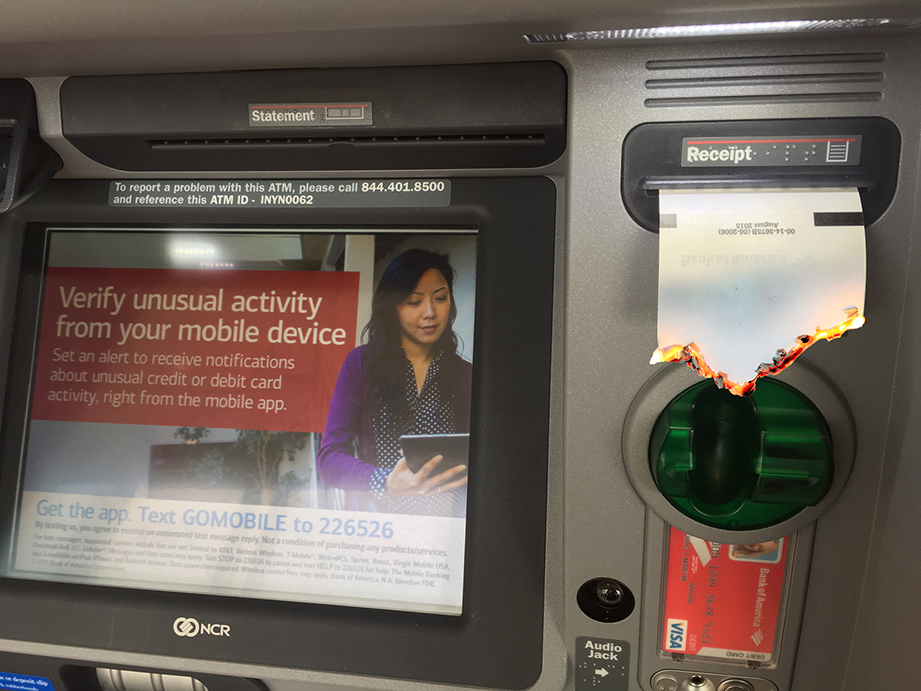
From 2012 until this summer, the project lived online, and the shows were almost never open to the public. This gave us a lot of freedoms that we wouldn’t have had if we had opened a normal exhibition space—the most obvious one being the lack of overhead. And also by not having to pay rent, we also didn’t have a monthly rent cycle to keep up with, so we didn’t need to necessarily do monthly shows. Sometimes we would document three shows in a couple of weeks, and then slowly roll them out over the next few months. Other times we’d work with artists in other parts of the world, like Mexico City or Beijing, who would set up and document their own shows without us being there. So we had the ability to work with artists who we normally wouldn’t be able to show because we couldn’t afford to ship their work to New York, while also having the flexibility to not only do shows whenever we wanted to (or not do shows when we didn’t want to), but also to do shows that were in no way influenced by the need to sell work and pay rent.
How did people react to the concept?
In the beginning it was tough to make the idea clear. For our first show that we documented at the Bushwick Motel people actually showed up to the hotel because they did not realize there was no opening. We also got a lot of skepticism from people who wanted to know why we thought it wasn’t important to see work in person. Some people assumed that we were promoting this idea that there was no difference between experiencing a physical artwork and the representation of a physical artwork in the form of an image or video online. This couldn’t be farther from the case. Of course there is a lot to be gained from seeing a work in person and we can’t deny that, nor would we want to. But the truth is, out of all the art we see on a daily basis, the grand majority of it is online, especially if you don’t have the privilege of living in an area of the world that has good galleries and museums, etc. So we were just being transparent about the nature of viewing art in our current time, rather than pushing some kind of value judgement or mandate. Since we started in 2012, these sorts of ideas have become much more widespread and common, so we no longer get this kind of push back or confusion. A lot of projects now operate the way we do, so it’s more accepted.
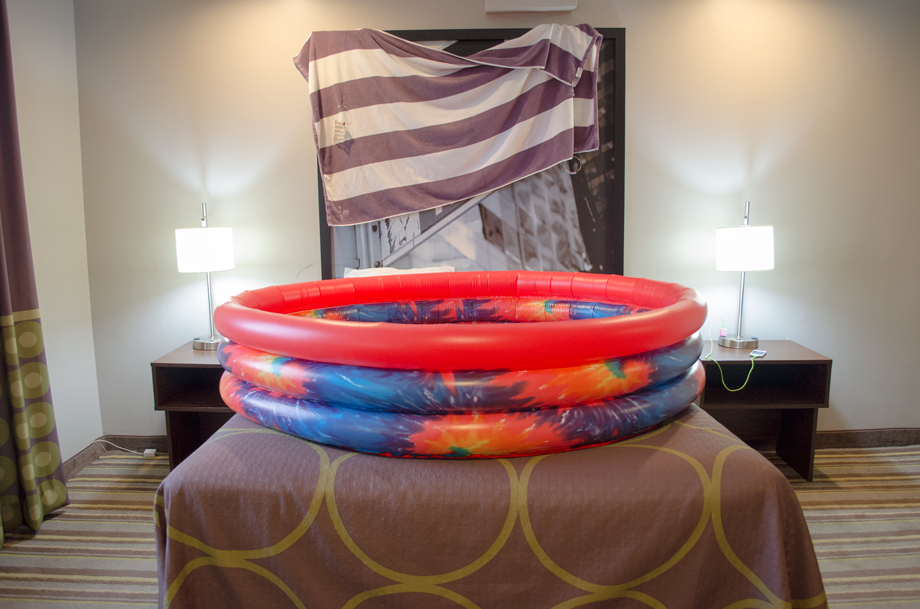
Can you briefly mention some of the shows you’ve done and the artists you’ve worked with?
Our first show was at Bushwhick Motel—a seedy rent-by-the-hour sex hotel—and we had a lot of trouble finagling our way in with cameras. In desperation and in broken Spanish we finally implied that we just wanted to shoot a porno, since telling them it was for art purposes didn’t get us anywhere. Somehow that narrative went over smoothly and we were able to get a room to document the show. That show included Bunny Rogers, who at the time was known among peers, but now of course she’s much better known having just opened a solo show at the Whitney. Our second show we staged in a hotel room where Isaac Pool enacted a play/performance on the bed, and that became a video. And initially, we had Francis Bean Cobain (Kurt Cobain’s daughter) on the bill too. She followed Johnny on Instagram, so we DMed her and she was really excited to be a part of it. But then she ghosted and never sent us her work, so we took her name of the show list but we printed out some of her drawings from her Tumblr onto 8 by 11 computer paper and hung them anyway. That show also included Brad Troemel, who was actually our teacher at the time but has since become a good friend. We then did a show that was funded by a residency Loney was doing that included Amalia Ulman, Katja Novitskova, Daniel Keller, and Jon Rafman. That was a great show but none of the artists were in town, so it felt a little isolated. We ended up with a car vinyl wrapped with this sexually explicit, manga-inspired image Jon made, which we were really pumped about at first but has since become kind of a nightmare for obvious reasons. In 2013 we tried installing a solo show for Debora Delmar at Spa Castle here in Queens, but we were so bad at taking pictures that Debora redid the whole thing at a hotel in Mexico City. The process of sneaking into Spa Castle to make an art show was nuts though; at some point Loney was laying in a 140-degree sauna, naked and covered in sushi per Debora’s instructions. At that point we were still working with a third member of Hotel Art, Ian Swanson, but he left soon after that show.
Last year we went to Berlin to do a group show with a bunch of really great mostly-European artists living in Berlin. The show took the form of a potluck dinner party, which was basically just an excuse to get to know them all a little bit better. We did a show inside of a Bank of America ATM vestibule with Andrew Norman Wilson, Aude Pariset, and Quintessa Matranga in Queens. We did a show in a houseboat in Rockaway called “An Adventure Film Starring Tom Hanks” that was live streamed while we read part of the screenplay of Castaway—the part that describes the first scenes following the plane crash. Zack Davis, Bradford Kessler, Mindy Rose Schwartz, and Bailey Scieszka were in that show. Half way through it we realized we weren’t really getting reception on the boat, so the live streaming never really worked and we ended up just making a movie for that one. Keith Varadi curated a group show for us in LA that we did in the parking lot of Dodger Stadium during a game. We both got heat stroke but otherwise it was a super fun show. We also worked with Sydney gallery in Australia, which we curated and Connor O’Shea, the director, installed and documented it. We’ve worked with some other really amazing artists as well… just too many to list all here.
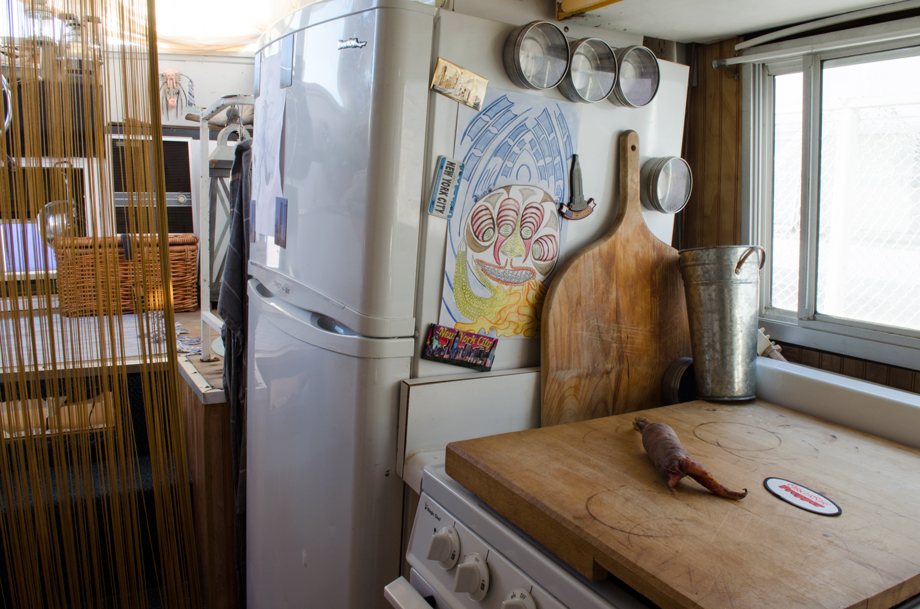
What was the main reason to start a different phase with H.A. Pavilion?
Hotel Art was working really well for us, but it was also a little anticlimactic. We’d spend all of this energy putting it together with so much anticipation leading up to the release of images online. Then we’d finally put them online and then just kind of high five, order Seamless, and hope that’d we get a few likes and that the blogs would share it. And I think it was a little anticlimactic for the artists too because they couldn’t go anywhere to celebrate what they had made. We were missing the community aspects of running a space.
We wanted to find a way to be able to continue doing what we were doing, and retain the freedom that we enjoyed, but with the ability to have openings and face-to-face interactions with our audience. So we searched Brooklyn to find an apartment with a huge backyard and we found one. In the beginning of this summer we built a free-standing gallery space (it’s really a shed with some drywall and nice lighting), which we’re calling Pavilion. Now we can actually have openings and interact with our audience and our community. And the openings have been great. We’ve gotten the chance to meet people who had been following us online for years, but who we had never crossed paths with before in person. And the vibe feels more like a summer barbecue or a party than it does an opening in a gallery space which is designed to be kind of uncomfortable to spend time in; people tend to hang out in the yard for a while.
Hotel Art seems to be the result of a global collaborative effort into a single online platform. How do you coordinate your projects with the off-site component? Do you have any established criteria for the participating artists, in particular for those who create their own show and documentation?
In the words of your punk rock dad, the only rule is there are no rules. So no, we don’t really have an established criteria for the artists we work with. But we will say that generally the most successful off-site shows are with artists who are already thinking about documentation as a medium, or alternative ways of showing or disseminating work. The show we did a couple of years ago with Oliver Haidutschek worked well because he was already making work that was meant for the camera. His work needed to be documented in order for it to become a piece.
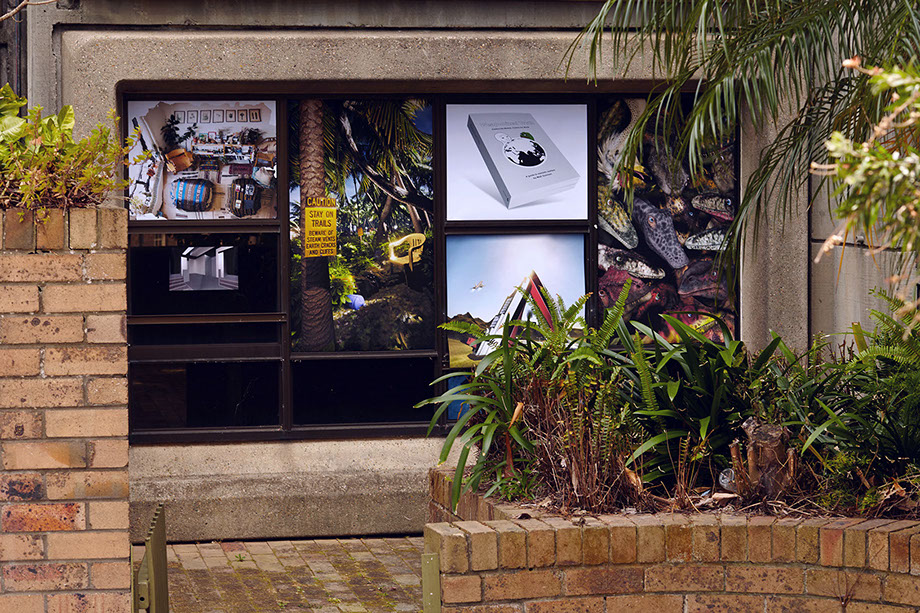
Apart from doing this curatorial project, you share a collaborative studio practice together and Loney also works as Editor-in-Chief at an art magazine. How do you handle all these practices on a daily basis and how would you say they influence one another?
We each work almost 50 hours a week at our day jobs, so we have to be really organized about planning our time on the weekends and weeknights. That’s truly the biggest influence our jobs have had on our work, which is to say that it primarily keeps us from spending more time doing our own stuff, unfortunately. But working a job in web publishing also reaffirms our belief in the power of social media and blogs to strengthen our program, and it’s for sure influenced our plans for the future phase of the gallery, which, if we ever have the opportunity to pursue it full time, might adopt a faster-paced model where we’re posting content on a daily basis in the way that an online magazine does.
Our own collaborative studio practice goes through it’s own cycles and phases, where we toggle between long periods when we’re mainly reading and researching and talking through ideas, and then really condensed periods of production when we’re ready to make and show the work. Hotel Art requires a similar sort of cycle, but with a much faster pace since we’re basically doing a show every month now. In terms of how all of these things influence each other—surely they do on some level, but maybe not in a way that’s easily put into words. I think that a huge influence on our work though has been having this big backyard that is filled to the brim with critters and plants. We got the backyard for Hotel Art, but it’s also become the place where we do most of our studio work too, and the setting is influencing the work that we do.
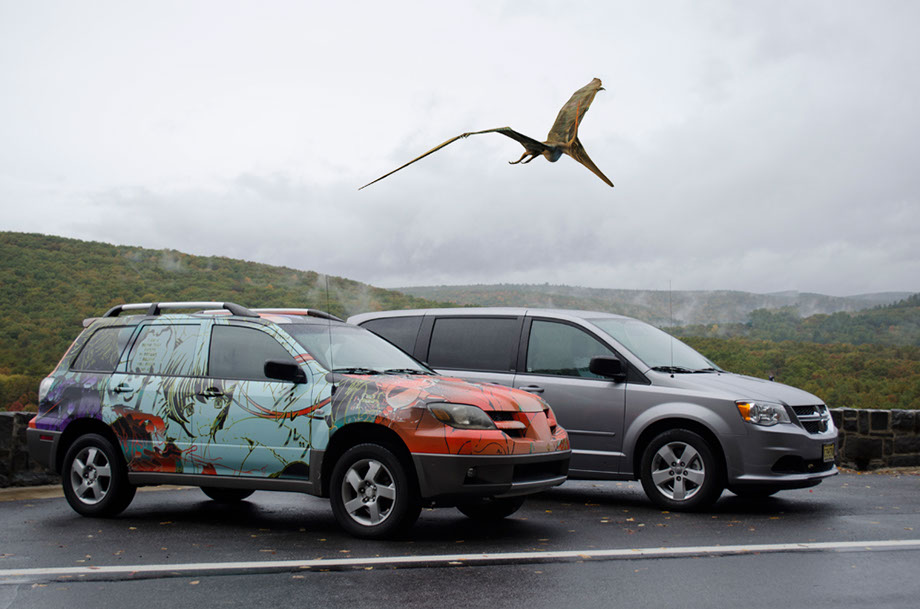
From a personal perspective, how do you envision art documentation ten years from now and what changes would you like to see in the art sphere by then?
That’s a tough question. With Loney’s job, we’ve become privy to the inner workings of an art e-commerce platform. These sorts of platforms are beginning to use super high-res images, as well as VR and 360-degree video. We imagine that some artists and some galleries will use this technology in really innovative ways, but for the most part, we can’t really imagine this type of documentation having much staying power once the novelty wares off. And from what we’ve seen, at least in terms of the market, people’s buying habits are still better predicted by whether or not the work was made by a known name than by how well it translates to the screen.
We think that brands and corporations might begin to take on larger roles in the art world, providing platforms for artists that could actually allow for more freedom and flexibility than galleries allow, but not without some disadvantages too, of course. But that’s a whole other conversation. If that becomes the case though, we imagine that the documentation of discreet individual art objects will become less important overall, and the projection of an artist’s persona, or ideas, or lifestyle will be the most visible component of their practice. Of course, we’ve been seeing this unfolding over social media already.

And could you tell us about your future plans for Hotel Art?
We just wrapped up our second show at Pavilion with Ivana Basic and BB5000, a collaborative group based in Milan. On August 12th we open our third show with Alex Ito and Amna Asghar, which we’re really excited about. They’ve been having a dialogue with each other over the past couple of months and have really honed in on the commonalities they share. With the start of Pavilion, we’ve been focusing on pairing two artists who have never shown together, but who we think could really get a dialogue going among them. The first Pavilion show we did with Michael Assiff and Dennis Witkin was a great example of this kind of synergy.
Because of the harsh winters in New York, Pavilion will shut down over the winter, but we may do some off-site shows during that time. And we have a great line up for the Spring and Summer of 2018 that we couldn’t be more excited about. In the long term, we have a lot of ideas about how Hotel Art could grow, and we hope to be able to expand it in 2019 if we play our cards right. We’re not quite ready to discuss what model it will take yet, but like we mentioned earlier, it would involve producing different types of content—not just exhibitions—that circulate online more frequently, and provide more depth and context around each of the artists we work with rather than simply showing a few pieces that they’ve made. But for now we’re concentrating on just programing the space with the best shows we can make, building new relationships, and working on our own studio work while working our days jobs and keeping our heads above water.
SYDNEY
How did you trace the idea for Sydney?
I was travelling in 2014 to NY and Europe and then lived in Berlin. This really changed my thinking. I spent my time making work, visiting spaces, artists and meeting lots of new people. I was very influenced through visiting galleries and spending time with artists in Europe and America, I was especially influenced by the people in Vienna who are doing amazing things, I am very attached to Vienna and I love the way people operate in that city. I always really enjoyed and felt very comfortable in a gallery environment so I knew I wanted to open a space one day, I didn’t know how quick that was going to happen. I started working with people organizing shows in Berlin and Vienna, after quite awhile living abroad I decided to move back to Sydney. I enrolled in a masters course and quickly unenrolled, when I arrived home I felt like something was missing, I missed the dialogue I had with my friends abroad, so I decided to open my space “Sydney” with the intent that I was going to continue working with people in Europe and America to make the space a platform for international art in Australia.
A friend of mine hooked me up with a space that had a cheap rent, it was in a very bad condition, so all my friends got involved and renovated it together, it was a great summer a time I will never forget. The Physical space opened with a show by Martyn Reynolds called Click Bait Think Piece. A platform for younger international art was something that was missing at the time but that is now changing in a very exciting way, there are some great galleries here in Sydney that show international work such as Minerva and a new addition that just opened called Fine Arts, Sydney. I believe more will follow and this is a great thing for the city of Sydney. The gallery has since moved into my house due to the first space being turned into a five-star hotel which happens a lot in Sydney, moving the space into my house has changed the experience away from a regular gallery setting into something refreshing.

What were the biggest obstacles you faced so far?
The biggest obstacle running a gallery in Sydney is shipping and will always be shipping. There are always ways to get around this problem, taking work back from Europe in a suitcase or things like this. I was also unaware when I opened “Sydney” of how the Sydney audience would interact and react with international work in Sydney opening a space which did not show many local artists, that was a challenge also, slowly introducing work to an audience which was not used to seeing this kind of work on a regular basis, was very interesting.
Which criteria do you follow in order to select the artists you present?
The only criteria I set or follow is somehow related to my interest, peoples work I have followed for along time and have done my research on, but the space is mostly linked to my experience traveling. For example, I just got back form a research trip to LA and NY, meeting lots of great people, some by chance, and some set up previously, the people I met are now part of the future program. It makes the whole program spontaneous not so calculated, never knowing how the gallery will evolve or who I will meet is very exciting for me. I also take a lot of suggestions on who should be involved in the space from my friends, people I trust and people who have shown at the space, this evolves the space, taking it away from my taste, into another place. I am also interested in artists that run spaces and continue a practice at the same time like how I run Sydney as an Artist. I show a lot of people that are multi faceted they run a gallery, magazine, make music and have their own practice, all at the same time as well as having a day job working within many contexts and on many platforms, these are the people I love to work with.
The projects featured on Sydney’s website always manifested the interest to organize exhibitions in non-institutional spaces. This is often noticeable in shows documented in public or natural places from all over the globe. What importance do you think Sydney takes when providing this kind of dialogue between the online viewer with the participating artists, organizations and the cities they exist? The first show I did with “Sydney” was called “Redleaf” hosted offsite at Redleaf pool in Sydney’s east including Martyn Reynolds, Hany Armanious, Quintessa Matranga, Sofia Leiby, Travess Smalley, Sydney Shen, Adriana Ramić, Hilarie Mais and Viktor Timofeev. It is a very beautiful old harbor side pool with a great boardwalk and pontoons, a perfect framework was already in place for an exhibition. I then got more interested in producing shows in non institutional more public environments which had no physical openings, and was existing for the online viewer only this was also great because you can make something out of nothing, with very little budget, I think having very little money and putting a show on is a great thing because you have to work spontaneously and think of solutions to get around financial situations. I always enjoy the act of setting up something in the public realm amongst the general public. I also see the importance of both a physical space and the need for experimentation, so I thought I would balance my program with both. I would do a show offsite and then move the show into the physical gallery space for part 2, I find it important that the show is both seen online and also IRL, the idea of having objects switch context from online to physical and outside to inside interested me and I think it is important they both exist. This offsite show was followed by another in a cave called 2024, including Simon Denny, Keith J Varadi, Fabio Santacroce, Adriana Ramic, Will Benedict, Benjamin Hirte, and Dan Arps, named after the graffiti I found in the cave. Collaboration between not only natural landmarks but also between galleries and people who work in different fields is very important to me. I co curated a 3 – part show with fiction writer and good friend S.T Lore based on a short story he wrote about the CTA club in Martin Place as I thought a collaboration between a fiction writer and a gallery is an important thing to explore and a really refreshing perspective to incorporate into the program.

From a personal perspective, how do you envision the future of art documentation?
My feelings about documentation are contextualized best by talking about the recent 3 –part show I just mentioned co-curated with S.T Lore in Sydney, including Fiona Connor, Elif Erkan, Joshua Petherick, Lewis Fidock, Stephen Little.

Part 1 was hosted at the CTA Hotel in Martin Place built by Harry Seidler in the middle of the city. Due to time constraints (we had 30 minutes to document the show), and the improvisational nature of the install in the hotel environment, we made a decision to document the exhibition entirely on a film camera. Using crime scene style flash photography, we wanted to embrace an anti aesthetic of professional documentation, wanting to not be overly thought-out or concerned with commercialization, while also placing attention on the viewer experiencing the energy of being there with the objects. When the film was developed the first thing I noticed was holding the images away from the screen, the grainy, beautiful atmospheric quality that complemented the objects in the image, and this was very refreshing for me as the viewer and as part organizer.
At the same time organizing this show I was working on my solo show titled “Thank you for your email and interest, but this wont be possible” presented at Minerva, 2 weeks into the show S.T Lore and I decided to move my gallery into the exhibition for 2 weeks presenting Part 2 of “We Remember It For You Wholesale”
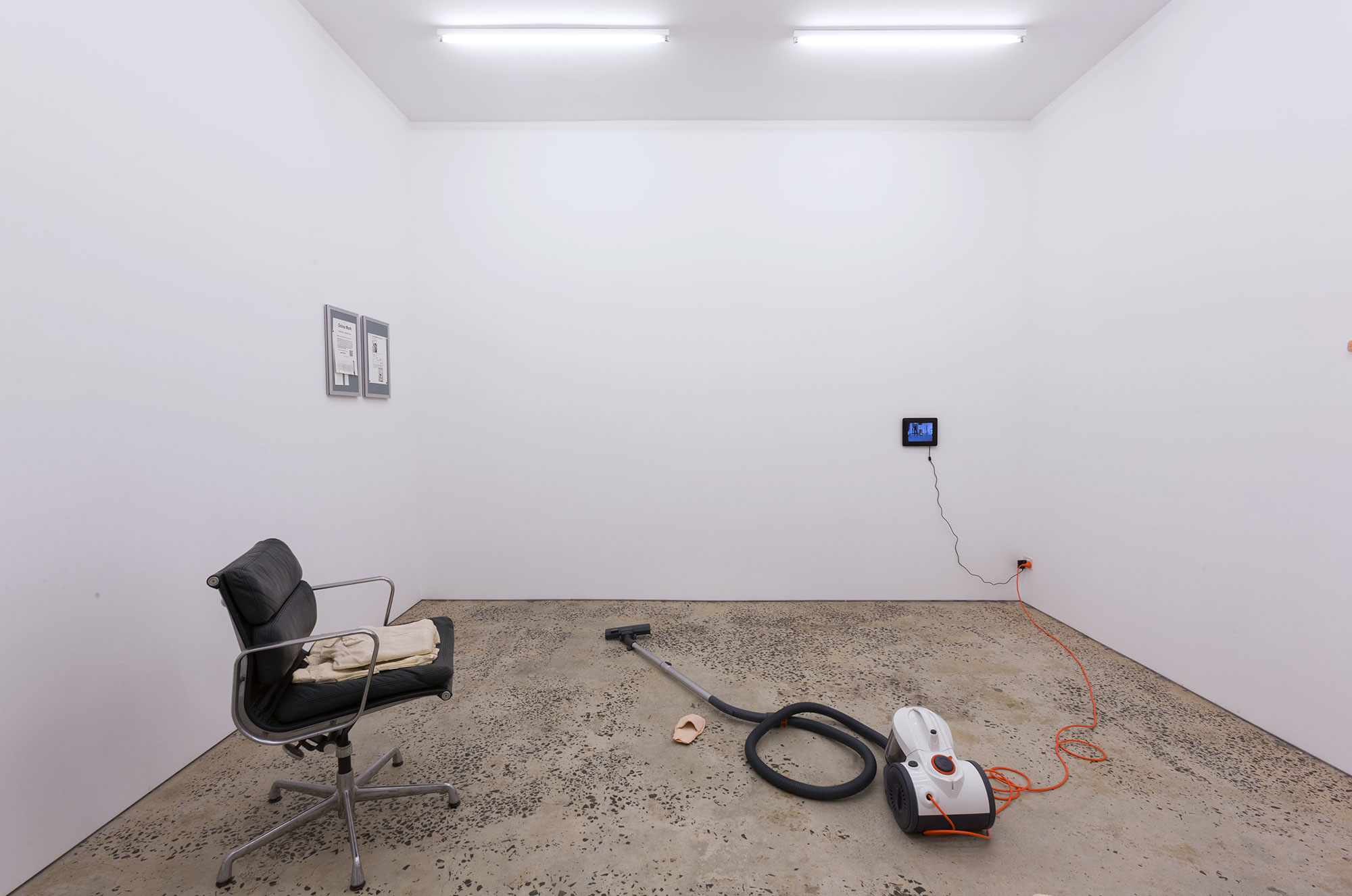
For part 2 we printed the hotel documentation out on Kodak paper and clipped it to the press release making the experience of viewing documentation much more physical and tactile so you could actually move it around the space and compare it with the objects in real-time. Part 2 was documented in a very clean clinical contemporary way, contrasting the atmospheric grainy documentation in part 1.

Part 3 is to be printed in a book including an interview with Stephen Little & the S.T. Lore short story ‘Best Seller’. It is also being designed by artist and World Food Books founder Joshua Petherick. This show was very exciting as it dealt with how documentation can be manipulated and used in different ways, showing an image in 3 ways, atmospheric, clean and print. This collaboration between S.T. Lore, Sydney and Minerva, was a formative experience as a curator it blurred the lines between curatorial and art practice, making documentation an experience.
I think documentation is always evolving which is a good thing, the question is what is the best way to document an object for the online viewer? Maybe multiple viewpoints like VR shows are going to be the new thing? Maybe art blogs will have a VR section, I think that would be interesting. But also, like the show I described above, their can be combinations of the future with the past. S.T. Lore and I even talked about a pre-1986 gallery. The year online documentation first came into being. Maybe the pre 1986 gallery would only have one photo. or a paragraph of text to describe it. These are all ideas I will explore in the future.
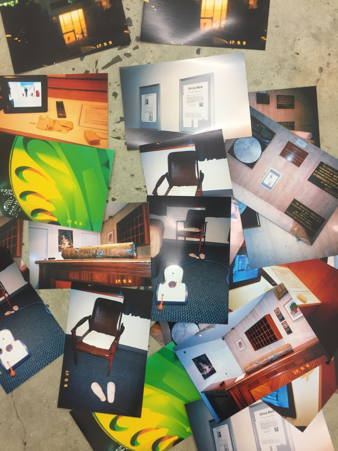
Please tell us about Sydney’s main goals for the future.
The main goals for Sydney is to keep people and artists interested refreshed and excited about the space.
Interviews conducted by O Fluxo with
Loney Abrams and Johnny Stanish, Hotel Art
http://hotel-art.us/
& Conor O’Shea, Sydney
http://www.sydneysydney.net/
OFluxo © 2017

